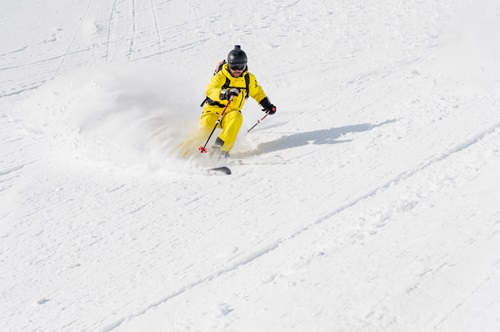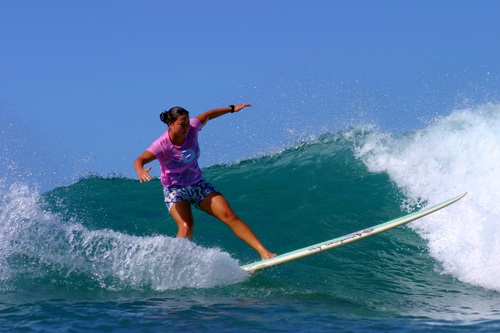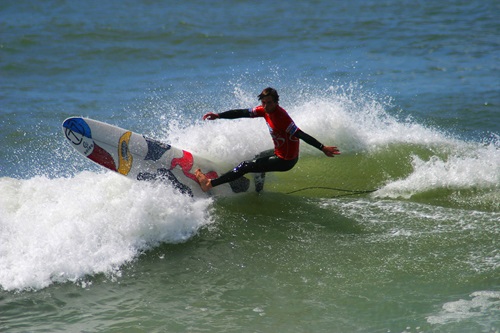
Photo © Vladislav Turchenko | Dreamstime.com
The IOC has long been in search of sports that will serve to attract (or bring back) young viewers to the Olympics. So far, they have added rock climbing, skateboarding and breaking.
So what’s next?
Two new (and somewhat extreme) sports, one for the Summer Games and one for the Winter Games, are being suggested. The governing bodies want to see them included, while the IOC, for its part, is hoping event owners will embrace and promote them, creating a deeper bench of potential athletes in years to come. Let’s take a look at what’s on the horizon.
Freeriding

If you go by Wikipedia, “freeriding is a style of skiing or snowboarding performed on natural, ungroomed terrain, without a set course, goals or rules. It evolved throughout the sport's formative years as a contrary response to the highly regimented style of ski competition prevalent at the time.”
The hallmark of freeriding is its incorporation of challenges posed by the natural landscape, rather than the use of manmade features like rails, jumps and halfpipes. Accordingly, its backcountry (or off slope) nature means that instead, athletes face challenges like avalanches. But the risk and the out-of-bounds nature of that aspect of the sport is what is seen as an attractant for those edgy, youthful viewers whose attention the IOC is trying to get.
Freeriding has some serious muscle behind its lobby to become an Olympic sport; PlanetSki notes that in 2022, the Freeride World Tour – in essence, the World Cup of freeride – was acquired by the governing body, the International Ski & Snowboard Federation (FIS). In June 2024, at its General Assembly in Reykjavik, FIS recognized freeride skiing and snowboarding as an official discipline.
According to Nicholas Hale-Woods, the founder of the Freeride World Tour, the sport is enticing to the powers that be.
"The IOC has told us that – just like they did with surfing, skateboarding and sports climbing – they are willing to integrate freeriding because it's appealing to a young audience," said Hale-Woods. "Because it's very telegenic and because one of their media partners, NBC, is saying, ‘We’d love freeriding in the grid of the Olympics program.’"
And, he added, "FIS has this on the agenda because freeriding is a part of snow sport that is big, growing and appealing to a young audience. FIS has already mentioned this wish and the formal integration and documentation that needs to be done will be happening in February and March this year."
Skiers and snowboarders who are skiing in the backcountry on the tour are closely watched by the media and thus, can be rescued if needed. But if the sport is viewed by those who want to try freeriding (and who are not skilled in the discipline), it could result in people exploring where there are no lifts or safety personnel. Event owners need to be aware of terrain, and to work with venue owners to map out areas where athletes can compete.

The upshot: Event owners may need to vet carefully the athletes who want to enter such competitions – and to set aside specific areas for athletes to use, with the assurance that safety personnel can be summoned, should it become necessary.
Longboard
Moving into the Summer Games, a new sport has been suggested: Longboard. To back up a bit, surfing has long been classified into two disciplines, shortboard (which we saw in the most recent Games) and longboard.
SurfnSea notes, “longboards [which date back to the dawn of the sport] are generally eight feet plus, wider rounded noses and a lot more foam volume. Shortboards range from about five to seven feet long and have an upturned tip (nose rocker). Usually, short boards have two to four fins.”
While no sport has the distinction of being better than the other, it is generally accepted that longboards provide a better entry point to the sport for those just learning to surf. Longboards allow for more stability when cutting through the water and are propelled through water more easily than shortboards, making them a great option for smaller and/or less intense waves. At the same time, longboards offer challenges to those who choose to ride them. Turning the board can be more of an effort and position on the board is crucial.
The International Surfing Association (ISA), the highest governing body for the sport, says longboard will not be included in the 2028 Games but is in the crosshairs for 2032, when the Olympics come to Brisbane. The organization has a powerful advocate in its corner: newly elected IOC President Kirsty Coventry, whose links to the sport have been well documented. Coventry among other posts of responsibility, has held the ISA’s office of vice president:
"Kirsty is a great friend of surfing and we are grateful for her support as our sport continues on its Olympic journey," the federation's president, Fernando Aguerre, told Inside The Games. Aguerre is eyeing Brisbane 2032 as longboard's debut.

Now with the most powerful IOC insider possible in Coventry, surf's various governing bodies are eager to get official confirmations sealed even as the initial March deadline passes, with ISA expecting a final decision around mid-April, per La Gazzetta reports, just ahead of the longboard world championships in El Salvador.”
Longboard has its roots deep in surfing’s history (and that of water sports as a whole); it was the discipline of surfing introduced by Hawai’ian legend Duke Kahanamoku, who competed in the Olympic Games in Stockholm in 1912 and won the 100-meter freestyle contest, largely because of the crawl technique that he copied from surfing. After his success, he traveled around the world to introduce surfing to coastal regions. To this day, longboard styles bear his name.
The potential for both freeriding and longboarding to secure a spot in the Olympics remains to be seen. But overall, the IOC is all about sports that are both exciting to watch (leading to increased viewership), and aspirational, encouraging the public and making them more excited about possibly trying the sports when they get the chance. These two sports check those boxes.

